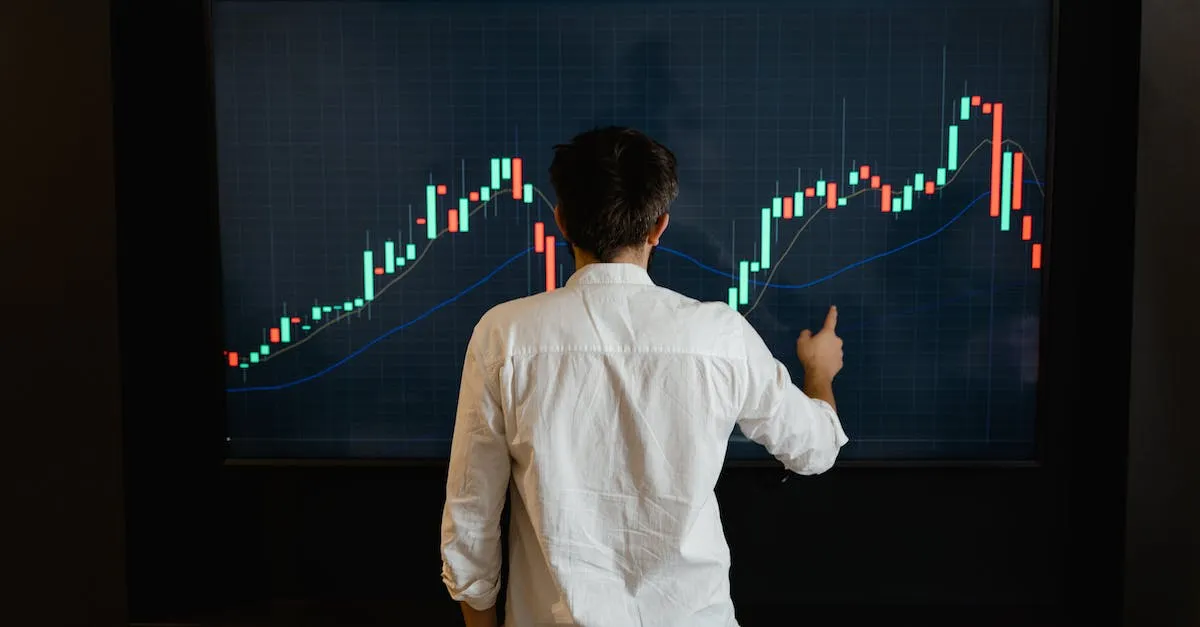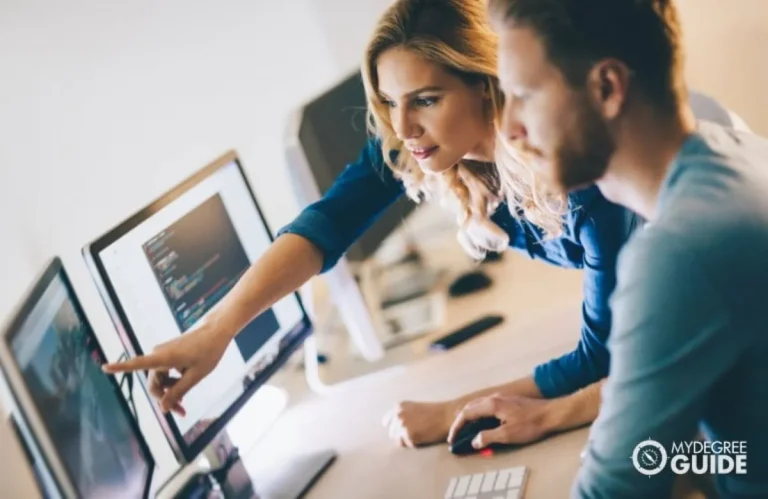Data Science Vs Data Analyst: What’S The Difference?
In today’s data-driven world, data science and data analytics are two of the hottest career paths. But what exactly do these jobs entail, and how do they differ from each other? Keep reading to find out.
If you’re short on time, here’s a quick answer to your question: Data scientists focus more on advanced statistical modeling and machine learning algorithms, while data analysts work with simpler data analysis and visualization tools to extract business insights.
In this comprehensive guide, we will compare data scientists and data analysts across various factors like skills required, work activities, salary, job outlook, and more. We will also look at the educational background you need for each role and some examples of daily tasks.
By the end, you’ll have a clear understanding of these two careers and be able to decide which one aligns better with your interests and abilities.
Overview of Data Science and Data Analyst Jobs
What is a Data Scientist?
A data scientist is a professional who uses various techniques and tools to analyze and interpret complex data sets. They apply advanced statistical and mathematical models to uncover patterns, trends, and insights that can help businesses make informed decisions.
Data scientists work with large amounts of structured and unstructured data, and they are skilled in programming languages such as Python and R.
Data scientists play a crucial role in developing and implementing machine learning algorithms and predictive models. They are responsible for identifying relevant data sources, cleaning and organizing the data, and applying appropriate statistical methods to extract meaningful information.
Data scientists also have strong communication and storytelling skills, as they need to effectively communicate their findings to non-technical stakeholders.
What is a Data Analyst?
A data analyst, on the other hand, focuses on the analysis and interpretation of data to provide insights and support decision-making. They work with structured data and use tools like Excel, SQL, and Tableau to collect, clean, and analyze data.
Data analysts are skilled in data visualization and reporting, as they often create dashboards and reports to present their findings to stakeholders.
Data analysts primarily work with historical data to identify trends, patterns, and correlations. They may also perform ad-hoc analysis to answer specific business questions. Unlike data scientists, data analysts are typically not involved in the development of complex statistical models or machine learning algorithms.
Instead, they focus on data exploration and providing actionable insights to drive business growth.
| Data Scientist | Data Analyst |
|---|---|
| Works with complex and unstructured data | Works with structured data |
| Applies advanced statistical and mathematical models | Uses tools like Excel and SQL for analysis |
| Develops and implements machine learning algorithms | Focuses on data exploration and visualization |
| Strong programming skills (Python, R) | Proficient in Excel, SQL, and Tableau |
| Communicates complex findings to non-technical stakeholders | Creates reports and dashboards for stakeholders |
Both data scientists and data analysts play important roles in the field of data analysis, but their focus and skill sets differ. Understanding the distinction between these roles can help individuals determine which career path aligns better with their interests and goals.
Essential Skills for Each Role
Data Science Skills
Data science is a rapidly growing field that requires a unique set of skills. Data scientists are responsible for extracting insights and making predictions from complex and large datasets. To excel in this role, data scientists must possess a strong foundation in mathematics, statistics, and computer science.
They should be proficient in programming languages such as Python or R, and have a deep understanding of machine learning algorithms and techniques. Additionally, data scientists need to have excellent analytical and problem-solving skills, as well as the ability to communicate their findings effectively to non-technical stakeholders.
According to a survey conducted by KDnuggets, the top skills required for data scientists include programming, statistical analysis, machine learning, data visualization, and big data knowledge. It’s important for data scientists to stay updated with the latest tools and technologies in the field, as the industry is constantly evolving.
Data Analyst Skills
Data analysts, on the other hand, focus on analyzing and interpreting data to uncover insights and help businesses make data-driven decisions. While data scientists typically work with large and complex datasets, data analysts often deal with structured and smaller datasets.
To be successful in this role, data analysts should be proficient in SQL and Excel, as these tools are commonly used for data analysis and manipulation. They should also have a solid understanding of statistics and data visualization techniques.
According to a study conducted by Bureau of Labor Statistics, data analysts should have skills in data mining, data cleaning, data visualization, and statistical analysis. Attention to detail, critical thinking, and the ability to communicate findings in a clear and concise manner are also essential skills for data analysts.
Additionally, data analysts should be able to work collaboratively with other teams and possess a business acumen to understand the context and objectives behind the data analysis.
Typical Work Activities
Data Scientist Work Activities
Data scientists are responsible for extracting meaningful insights from large and complex datasets. Their work activities typically involve:
- Collecting and analyzing data from various sources
- Building and implementing machine learning models
- Designing and conducting experiments to test hypotheses
- Developing algorithms and statistical models
- Creating data visualizations and reports to communicate findings
- Collaborating with cross-functional teams to solve complex problems
Data scientists leverage their strong analytical and programming skills to uncover patterns, trends, and correlations in data. They often work with programming languages such as Python or R and use tools like TensorFlow or Tableau to carry out their analyses.
Data Analyst Work Activities
Data analysts, on the other hand, focus on interpreting and presenting data to support decision-making within an organization. Their work activities typically include:
- Gathering and cleaning data from various sources
- Performing data validation and quality assurance checks
- Creating and maintaining databases and data warehouses
- Conducting statistical analyses and generating reports
- Identifying trends and patterns in data
- Presenting findings to stakeholders in a clear and concise manner
Data analysts possess strong analytical and problem-solving skills, but their focus is more on the interpretation and presentation of data rather than developing complex models. They often work with tools like SQL, Excel, or Tableau to extract, clean, and visualize data.
It’s important to note that while there are overlapping skills and responsibilities between data scientists and data analysts, the key difference lies in their primary objectives. Data scientists are more focused on developing advanced models and algorithms to extract insights from data, while data analysts are more focused on interpreting and presenting data to support decision-making.
If you’re interested in learning more about the roles and responsibilities of data scientists and data analysts, you can visit SAS or Simplilearn for further information.
Educational Requirements
Data Science Education
To pursue a career in data science, a strong educational background is essential. Most data scientists have at least a bachelor’s degree in a field such as computer science, mathematics, statistics, or a related discipline.
However, many employers prefer candidates with advanced degrees such as a master’s or a Ph.D. in data science or a related field.
Coursework in data science programs typically includes mathematics, statistics, computer programming, data analysis, machine learning, and data visualization. These courses provide a solid foundation in the technical skills required to work with large datasets and extract meaningful insights.
Additionally, aspiring data scientists often participate in internships or research projects to gain hands-on experience and apply their knowledge in real-world scenarios. This practical experience helps them develop problem-solving skills and familiarize themselves with industry tools and technologies.
It’s worth noting that the field of data science is constantly evolving, and professionals in this field must continuously update their skills and knowledge. Many data scientists pursue certifications and attend workshops or conferences to stay up-to-date with the latest trends and techniques.
Data Analyst Education
While a bachelor’s degree is also typically required for a career as a data analyst, the educational requirements may not be as stringent as those for data science. Data analysts often have degrees in fields such as mathematics, statistics, economics, or business.
Coursework for data analysts typically includes statistics, data management, data visualization, and business analytics. These courses provide a foundation in analyzing and interpreting data to support decision-making in various industries.
Although a master’s degree is not always necessary for a data analyst role, obtaining one can provide a competitive edge in the job market. Advanced degrees in fields such as data analytics or business intelligence can deepen a data analyst’s understanding of data analysis techniques and enhance their problem-solving skills.
In addition to formal education, data analysts often develop their skills through on-the-job training and experience. They learn to use various software tools and programming languages to manipulate and analyze data effectively.
Data analysts can also benefit from certifications, such as the Certified Analytics Professional (CAP) or the Microsoft Certified: Data Analyst Associate, which validate their expertise and demonstrate their commitment to professional development.
It’s important to note that the educational requirements for both data scientists and data analysts can vary depending on the industry and specific job requirements. Candidates with a combination of education, practical experience, and relevant certifications are well-positioned to excel in these roles.
Salary and Job Outlook
Data Scientist Salary and Job Prospects
Data scientists are highly sought after in today’s job market, thanks to their expertise in analyzing complex data sets and extracting valuable insights. As a result, they are often rewarded with lucrative salaries.
According to Glassdoor, the average annual salary for a data scientist in the United States is around $120,000, with some professionals earning well over $150,000.
Moreover, the job prospects for data scientists are excellent. With the increasing reliance on big data across industries, there is a growing demand for skilled professionals who can make sense of the vast amount of information available.
Companies are actively looking to hire data scientists to help them make data-driven decisions, improve operational efficiency, and gain a competitive edge in the market.
Data Analyst Salary and Job Prospects
Data analysts play a vital role in collecting, analyzing, and interpreting data to help organizations make informed business decisions. While their work may overlap with data scientists, the focus of data analysts is more on organizing and visualizing data rather than developing complex algorithms.
According to PayScale, the average annual salary for a data analyst in the United States is around $65,000. However, this can vary depending on factors such as experience, industry, and location. Senior data analysts with several years of experience can earn salaries upwards of $100,000.
In terms of job prospects, data analysts are in high demand as well. Many industries, including finance, healthcare, and e-commerce, rely on data analysts to identify patterns, trends, and opportunities for improvement.
As businesses continue to gather and analyze data, the need for skilled data analysts will continue to grow.
Daily Responsibilities
A Day in the Life of a Data Scientist
As a data scientist, the daily responsibilities revolve around collecting, analyzing, and interpreting complex data sets. They use their expertise in statistics, programming, and machine learning to uncover patterns, trends, and insights that can help organizations make informed decisions.
Data scientists spend a significant amount of time cleaning and preprocessing data, ensuring its quality and accuracy. They also develop and implement predictive models, algorithms, and data visualizations to communicate their findings to stakeholders.
On a typical day, a data scientist might start by gathering data from various sources, such as databases, APIs, or web scraping. They then clean and transform the data to remove any errors or inconsistencies.
Once the data is ready, they apply statistical techniques and machine learning algorithms to analyze and model it. This involves running experiments, testing hypotheses, and fine-tuning the models to achieve optimal results.
Data scientists also collaborate with other team members, such as software engineers or business analysts, to understand the context and goals of the project.
Data scientists often work on complex projects that require a deep understanding of statistical methods and programming languages like Python or R. They constantly stay updated with the latest research and techniques in the field to ensure they are using the most effective tools and approaches.
Additionally, they may be involved in presenting their findings to non-technical stakeholders, explaining the insights in a clear and understandable manner.
A Day in the Life of a Data Analyst
Data analysts, on the other hand, focus on gathering, analyzing, and interpreting data to support business decisions. Their role is more focused on providing insights and reports based on existing data rather than developing predictive models or conducting in-depth statistical analysis.
Data analysts often work with large datasets, using tools like SQL or Excel to extract and manipulate the data.
On a typical day, a data analyst may start by collecting data from various sources, such as databases, spreadsheets, or CRM systems. They then clean and organize the data to ensure its accuracy and completeness.
Once the data is ready, they use statistical techniques and data visualization tools to analyze and present the findings. Data analysts often create dashboards or reports that summarize the key insights and trends for decision-makers.
Data analysts also collaborate with other team members, such as business stakeholders or data scientists, to understand the objectives and requirements of the analysis. They may need to ask clarifying questions, gather additional data, or validate assumptions to ensure the analysis is accurate and relevant.
Additionally, data analysts may be responsible for maintaining data integrity, monitoring data quality, and identifying any potential issues or anomalies.
Data analysts play a crucial role in helping organizations make data-driven decisions by providing insights and recommendations based on their analysis. Their ability to interpret data and communicate findings in a clear and concise manner is highly valued in today’s data-driven business environment.
Conclusion
In summary, data scientists and data analysts work with data but their roles, required skills, and day-to-day work differ significantly. Data scientists build advanced statistical models and algorithms for predictive analytics, while data analysts focus more on querying, visualizing, and interpreting data to support business decisions.
If you enjoy statistics and coding and want to work on predictive modeling or machine learning applications, data science is likely the better career option. For those interested in SQL, Excel, Tableau and identifying business insights, data analyst is the way to go.
We hope this comprehensive comparison helps you decide whether data science or data analytics is the right path forward. With the exponential growth of data in all industries, companies will continue to have a huge demand for both skillsets.
Getting the necessary education and experience can set you up for a rewarding, in-demand career in either of these fields.







